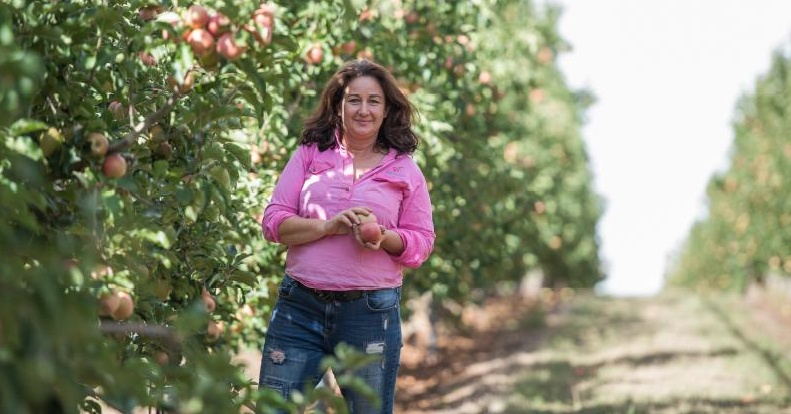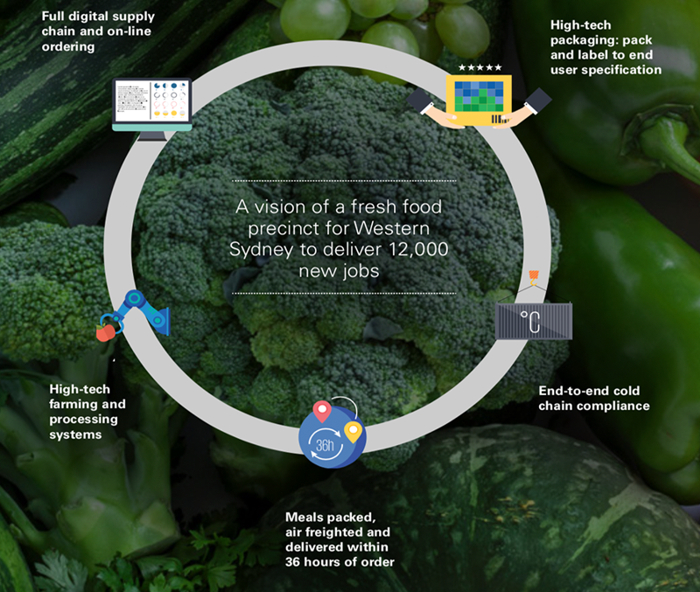Fiona Hall knows all about the problems that farmers face when it comes to transporting produce across the
Blue Mountains. She is part of a second generation orcharding family growing cherries and apples at the foot of Mt Canobolas, near Orange in the Central Tablelands.
Fiona Hall knows all about the problems that farmers face when it comes to transporting produce across the
Blue Mountains. She is part of a second generation orcharding family growing cherries and apples at the foot of Mt Canobolas, near Orange in the Central Tablelands.
The family uses road transport to move its fresh fruit and juice to Sydney for sale in the city, or for distribution interstate. Fiona says that of the two decades she’s been farming in the region to the west of the Blue Mountains, transport options have improved incrementally as road upgrades have been made: “But it’s got a way to go. We’re not that far as the crow flies, it’s just a terrible drive for the transport guys.”
Growers and NSW Farmers are now calling on the state government to come up with a more reliable and efficient transport corridor through the Blue Mountains region. Without this investment, the ability to service rapidly-increasing international opportunities, as well as the domestic market, will be stymied.
NSW Farmers’ chief economist Ash Salardini says the Association is asking the government to earmark $1.5 million in the 2018-2019 budget (delivered 19 June) to investigate options for improving existing transport routes, and to run a “decent” scenario analysis on what could be achieved if different levels of funding were committed.
The 250km trip between Sydney and Orange has upwards of 40 sets of traffic lights through the mountains, Ash says.
The road runs through numerous townships, and takes trucks anywhere between four and six hours, depending on conditions. If something goes wrong on the road, that travel time can blow out to 10 hours.
“That’s not good enough for a just-in-time supply chain. That’s the crux of it,” he says.
Fiona agrees. “It’s pretty hard for our driver across the Blue Mountains, it’s slow and there’s lots of traffic. It’s a challenge for him and it’s a challenge for the [transport] operator to keep drivers on, because it’s not an easy route,” she says.
 Central Tablelands fruit farmer Fiona Hall in her apple orchard.
Central Tablelands fruit farmer Fiona Hall in her apple orchard.
More than
$3 billion of produce is already cultivated in the Central West region. Crucially, future agriculture opportunities lie with the development of just-in-time supply chains to service predominantly export markets.
Says Ash: “China is willing to pay up to a five-times premium for certain produce for freshness and cleanliness, so they know it’s going to be safe, not contaminated and handled properly.
“There are huge opportunities for fruit and vegetables, dairy and meat, but the issue is time. A consumer might go on [Chinese online shopping site]
Alibaba and do their grocery shopping on Monday. They expect delivery to their house on Wednesday or Thursday.”
Current infrastructure, however, is not helping producers meet these demands. Bells Line of Road is one of two existing road routes linking the western parts of NSW with the Sydney region. It is narrow, single lane and winding, and terminates at the base of the mountains in a heavily populated suburban area, forcing transport drivers to navigate city streets to get to ports in the north or south, or into the Sydney markets.
“Dual lanes and straightening, potentially building some tunnels, that’s the kind of conversation in the high billions,” Ash says of the cost of improving Bells Line of Road.
He suggests optimisation work to add some dual lanes to the other existing route on the Great Western Highway would be in the low billions, an equivalent cost to the much talked-about new sports stadiums in Sydney proposed by the government in late 2017.
“A kind of Snowy Hydro-sized legacy project would be to build a substantial tunnel where you could put other services through. That’s a $20 billion project and a game-changing signature policy,” Ash Salardini says.
It’s an idea that orchardist Fiona believes would be “ideal”, and of much broader economic benefit for the western areas. Ash says a tunnel would be the keystone infrastructure project in a decentralisation program for the state, which would position towns such as Orange that currently have populations under 100,000 as new regional hubs away from the coastline. It’s an idea increasingly common in the United States, and it focuses on not just agriculture, but on tourism and
manufacturing.
“We know that for short-stay accommodation, people will go somewhere if it’s less than three hours from where they fly in,” Ash says.
A tunnel would facilitate that, as well as make regional food manufacturing solutions a viable option for companies who need rapid distribution.
“We’re not suggesting a solution – we’re saying to the government, in an ideal world, what are the benefits of very, very efficient transport corridors to Sydney and other ports and markets?
“The next point is, what’s the government’s appetite? They need to do some decent scenario analysis on parcels of $2.5 billion, $10 billion or $20 billion, rather than just investigate one option.”
To facilitate the debate, NSW Farmers will host two roundtable discussions for industry and government representatives, and a paper outlining the findings of these talks will be released later this year.
Up, Up and Away - KPMG Project

The push for a better route to the west of Sydney is all part of the ‘thought leadership’ plans of NSW Farmers. This means the Association suggests big ideas that will help members, and pushes them through media, lobbies politicians, and hosts public meetings and forums.
This big picture agenda is already bearing fruit. NSW Farmers began lobbying for an agribusiness precinct at the forthcoming Western Sydney Airport last November, via a
report written in conjunction with consultant KPMG, and now the federal, state and local governments have announced they will carry out a feasibility study into the idea.
“NSW Farmers has been calling an agricultural precinct in and around the Western Sydney Airport a game-changer for the farming sector, and a driver for economic and jobs growth in Western Sydney,” says Matt Brand, CEO of the Association.
“All levels of government involved in this deal should be commended for taking a visionary position on the opportunities this once-in-a-generation investment in Western Sydney provides. This is a massive win for Western Sydney and regional NSW.”
The NSW Farmers and KPMG report,
Think Big Think Fresh: A Fresh Food Precinct at the Heart of Western Sydney, highlights the opportunities an agribusiness precinct will provide.
“This will create thousands of jobs in Western Sydney, and establish high value, modern and technologically-driven agricultural operations within the region,” says Matt.
The precinct will be a step-change for farming, allowing NSW farmers to send high-quality, high-value, fresh produce to lucrative international markets at a premium price.
“We can achieve price premiums of three to four times for our produce if we can get our goods from paddock to international consumer plates within 48-72 hours.
International consumers from places like China are only willing to pay these premium prices if we can guarantee the clean and fresh nature of the produce, and guarantee its provenance.
“The only way to achieve this is an integrated supply chain linking food production to the air freight facilities at Western Sydney Airport.”
It is envisaged that highly valuable and highly perishable produce will be grown within the precinct in state-of-the-art intensive horticultural operations, while effective freight transport links will allow farmers from across NSW to take advantage of opportunities provided by the new airport.